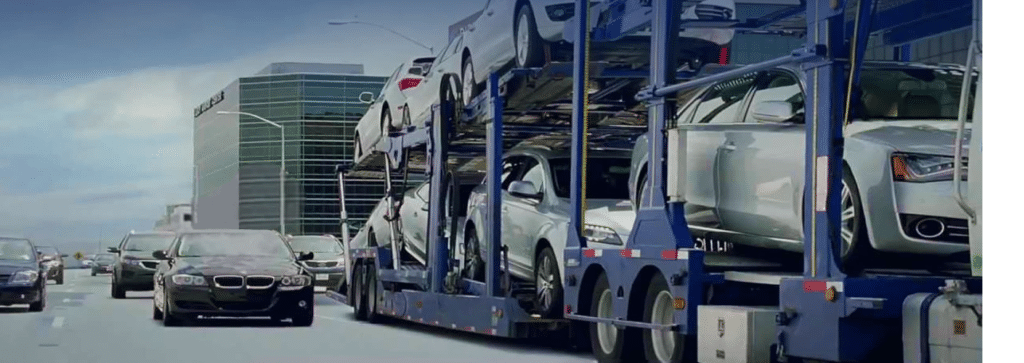Introduction To Compact Electric Cars In Hawaii
Hawaii, with its breathtaking landscapes and commitment to sustainability, is an ideal setting for compact electric cars. As the state continues to embrace renewable energy solutions and aims to reduce its carbon footprint, electric vehicles (EVs) have emerged as a perfect fit for urban commuting in Hawaiian cities. Compact electric cars are particularly well-suited for the unique demands of island living, offering efficient mobility without compromising on style or comfort.
In bustling urban areas like Honolulu or Hilo, navigating narrow streets and dealing with limited parking can be challenging. Compact EVs provide a nimble alternative that easily maneuvers through crowded cityscapes while also fitting into smaller parking spots. With their reduced size comes a significant advantage—enhanced energy efficiency that translates into lower operating costs and fewer emissions compared to traditional gasoline vehicles.
Moreover, Hawaii’s extensive network of charging stations is expanding rapidly, making it more convenient for residents and visitors alike to charge their vehicles while enjoying the beautiful surroundings. The state’s commitment to renewable energy sources enhances the appeal of electric cars; many charging stations utilize solar power, allowing drivers to harness clean energy even as they traverse the islands.
As we delve deeper into RAT’s top picks for compact electric cars tailored for Hawaiian cities, it’s essential to consider not just their performance but also how these vehicles align with Hawaii’s values of environmental stewardship and community well-being. By choosing compact EVs, residents can contribute positively to both their local environment and the broader goal of a sustainable future in paradise.
Factors To Consider When Choosing An Electric Car For Urban Living
When selecting the best compact electric car for urban living in Hawaiian cities, several key factors come into play that can significantly enhance the driving experience. One of the foremost considerations is range. Given Hawaii’s unique geography, where distances between towns can be short but varied, it’s essential to choose a vehicle with a sufficient battery range to accommodate daily commutes and weekend getaways without frequent recharging.
Charging infrastructure is another critical aspect. Urban areas in Hawaii are increasingly equipped with charging stations, but availability can vary by island and neighborhood. Prospective buyers should assess the accessibility of charging points near their residences and workplaces, as well as any potential home charging options if they have access to a dedicated parking space.
Compact size also plays a vital role in urban settings. The narrow streets and limited parking spaces prevalent in many Hawaiian cities make maneuverability and ease of parking essential features for an electric car. A smaller footprint not only aids in navigating tight spots but also contributes to better efficiency when it comes to energy consumption.
Moreover, climate considerations cannot be overlooked. Hawaii’s warm temperatures can impact battery performance; therefore, choosing an electric vehicle with effective thermal management systems is wise. Finally, it’s important to consider local incentives or rebates for electric vehicles that could offset the initial purchase price, making ownership more affordable while supporting sustainable transportation initiatives.
By weighing these factors carefully, residents can find an electric vehicle that meets their needs while embracing the eco-friendly lifestyle that aligns perfectly with Hawaii’s natural beauty and commitment to sustainability.
Overview Of Hawaii’s Unique Driving Conditions
Hawaii’s unique driving conditions present both challenges and opportunities for compact electric cars, making them an ideal choice for urban environments across the islands. The diverse topography of Hawaii, characterized by lush mountains, volcanic landscapes, and coastal roads, influences driving experiences significantly. In cities like Honolulu or Hilo, where traffic can be congested due to limited road space and high tourist activity, compact electric vehicles (EVs) excel in maneuverability and efficiency.
The climate in Hawaii also plays a crucial role in the suitability of electric cars. With consistently warm temperatures year-round, battery performance remains stable compared to regions with extreme weather fluctuations. Additionally, the availability of regenerative braking is particularly beneficial on hilly terrains, allowing drivers to harness energy while descending steep roads—a common feature throughout the islands.
Moreover, the growing network of charging stations across major urban areas enhances the practicality of using electric vehicles. Despite being remote from mainland infrastructure, Hawaii has made significant strides in promoting sustainable transportation solutions. Many municipalities are investing in EV-friendly policies and incentives that encourage residents to shift towards cleaner modes of transport.
Another factor influencing driving conditions is the cultural emphasis on sustainability within Hawaiian communities. As locals increasingly prioritize eco-friendly practices to preserve their stunning natural environment, compact electric cars align perfectly with this ethos. They offer an efficient alternative that reduces reliance on fossil fuels while providing a seamless driving experience tailored for island life.
In summary, Hawaii’s unique blend of geographical features and cultural values creates an ideal landscape for compact electric cars—offering residents a sustainable solution that caters to both daily commuting needs and environmental consciousness.
RAT’s Top Picks: Best Compact Electric Cars For Hawaiian Cities
When it comes to navigating the vibrant streets and scenic landscapes of Hawaiian cities, compact electric cars emerge as an ideal choice for eco-conscious drivers. RAT’s top picks prioritize efficiency, maneuverability, and sustainability, making them perfect companions for urban exploration amidst the stunning natural beauty of the islands.
One standout option is the Honda e. With its retro design and impressive turning radius, this compact car excels in city driving. The vehicle’s advanced technology features enable seamless connectivity while ensuring a smooth ride through bustling streets. Its efficient electric powertrain minimizes environmental impact, aligning perfectly with Hawaii’s commitment to renewable energy.
Another excellent choice is the Mini Electric (Mini Cooper SE). This car combines iconic styling with spirited performance, offering zippy acceleration that makes it fun to drive. Its compact size allows for easy parking in crowded areas like Honolulu or Lahaina while providing an engaging driving experience that captures the essence of island life.
For those seeking practicality without compromising style, the Hyundai Kona Electric stands out. This versatile SUV offers ample cargo space and a comfortable interior while maintaining a compact footprint suitable for urban environments. With its impressive range on a single charge, it allows residents and visitors alike to explore everything from local markets to breathtaking beaches without worrying about running out of juice.
In summary, RAT’s top picks for compact electric cars in Hawaiian cities reflect a blend of style, efficiency, and practicality. These vehicles not only cater to the unique demands of island living but also embody Hawaii’s growing commitment to sustainable transportation solutions—ensuring that both locals and tourists can enjoy their adventures guilt-free.
Comparison Of Range And Charging Infrastructure In Hawaii
When considering the best compact electric cars for Hawaiian cities, understanding the range and charging infrastructure is crucial. Hawaii’s unique geography and island layout present specific challenges and advantages for EV owners. Compact electric vehicles (EVs) are particularly well-suited for urban environments like Honolulu, where daily commutes are generally short, allowing drivers to maximize the efficiency of their vehicle’s battery range.
Most compact EVs available today offer a range sufficient for typical city driving. For example, models like the Nissan Leaf and Hyundai Kona Electric provide ranges between 150 to 250 miles on a single charge—adequate for traversing urban landscapes as well as making occasional trips between islands via ferry transport or short-haul flights. This makes them practical choices for residents who prioritize sustainability without sacrificing convenience.
However, the charging infrastructure in Hawaii is an evolving landscape. While many public charging stations can be found in populated areas such as Oahu and Maui, rural locations may have limited access. The state has been actively investing in expanding its network of Level 2 chargers, which can fully recharge a vehicle overnight—a perfect solution for homeowners with dedicated parking spaces.
Additionally, fast-charging stations are increasingly being installed along major routes to facilitate longer journeys.
Despite these advancements, potential buyers should still consider their individual driving habits and local charging availability when selecting a compact EV. The growing commitment to renewable energy in Hawaii also means that owning an electric car aligns with broader environmental goals while providing an efficient mode of transportation through its picturesque landscapes—all contributing to a sustainable future on these beautiful islands.
Environmental Benefits Of Driving Electric In The Islands
Driving electric cars in Hawaiian cities offers significant environmental benefits, contributing to the preservation of the islands’ unique ecosystems and enhancing the quality of life for residents. One of the most prominent advantages is the reduction of greenhouse gas emissions. Traditional gasoline-powered vehicles release a substantial amount of carbon dioxide and other pollutants into the atmosphere, which can exacerbate climate change and harm air quality.
In contrast, electric vehicles (EVs) produce zero tailpipe emissions, helping to mitigate these adverse effects.
Moreover, Hawaii’s commitment to renewable energy sources amplifies the environmental benefits of driving electric. The state has set ambitious goals to achieve 100% renewable energy by 2045. As more EVs are charged using solar, wind, or other clean energy sources, their overall carbon footprint decreases significantly. This transition not only supports Hawaii’s sustainability initiatives but also fosters a cleaner environment for future generations.
The reduction in air pollution is particularly crucial in densely populated areas like Honolulu or Hilo, where traffic congestion can lead to increased smog and respiratory issues among residents. By adopting EVs en masse, Hawaiian cities can enhance public health by improving air quality and reducing noise pollution as well since electric vehicles operate much more quietly than their combustion engine counterparts.
Additionally, promoting electric vehicle usage aligns with Hawaii’s broader conservation efforts aimed at protecting its fragile ecosystems—such as coral reefs and native wildlife—that are threatened by climate change and pollution. Embracing compact electric cars represents a proactive approach for islanders who wish to enjoy their beautiful surroundings while minimizing their environmental impact.
Conclusion: The Future Of Compact Electric Vehicles In Hawaii
As Hawaii embraces a more sustainable future, the potential for compact electric vehicles (EVs) in its cities is increasingly promising. The unique geography and urban layout of the Hawaiian Islands create an ideal environment for these efficient and eco-friendly cars. Compact EVs not only offer a solution to the rising concerns over carbon emissions and fossil fuel dependence but also address the specific transportation needs of residents in densely populated areas like Honolulu and Hilo.
Hawaii’s commitment to renewable energy sources, including solar and wind power, aligns seamlessly with the operation of electric vehicles. As charging infrastructure continues to expand across the islands, residents will find it more convenient than ever to transition to electric mobility. This shift will not only help reduce overall transportation costs but also contribute significantly to Hawaii’s goal of achieving 100% renewable energy by 2045.
Moreover, as automakers innovate and introduce new models that cater specifically to urban lifestyles, consumers can expect a growing range of compact electric options that combine performance with practicality. The integration of advanced technologies such as regenerative braking systems and smart connectivity features will further enhance the driving experience while promoting energy efficiency.
In conclusion, the future of compact electric vehicles in Hawaiian cities looks bright. With ongoing investments in infrastructure, favorable government policies, and a growing awareness among residents about environmental sustainability, compact EVs are poised to become a cornerstone of urban mobility across the islands. By embracing this transformation, Hawaii can lead by example in creating cleaner air quality while fostering an economy that prioritizes innovation and ecological responsibility.









